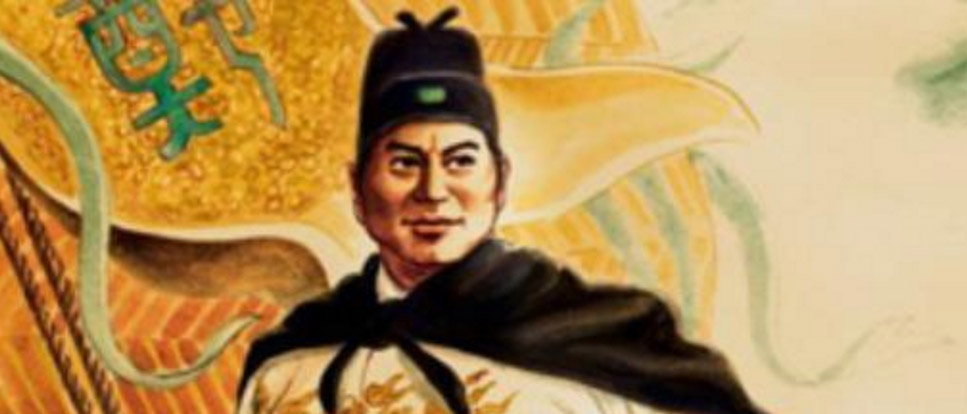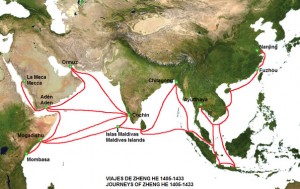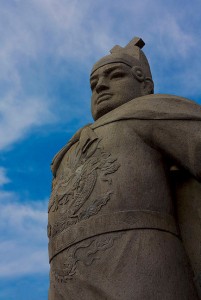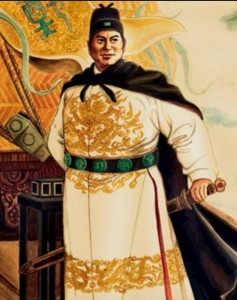
Search for the relics of Chinese legend Zheng He, at Calicut, Kerala



Two professors Shaojin Chai, a senior research fellow at the Ministry of Culture in UAE and Prof Haiyun Ma, a professor at Frostburg State University, Maryland US, came to Northern Kerala on January 7-9, 2016, in search of relics and final burial place of seven-foot tall Zheng He, (Cheng Ho), 1371-1435, Chinese naval explorer, commander over a seventh and final expedition in to the Western ocean (Indian Ocean) hub 1430 and fleet admiral of Ming dynasty, 600 years ago, arrived in the shores of Calicut (Kozikode), a bustling international sea port city.
National Geographic magazine described the naval armada of Zheng He off the coast of Sri Lanka as a ‘massive shadow on the horizon’ that moved like a ‘floating city’ and stretched across several miles of the ocean.
Ming Zheng was one of the pioneer navigators, much ahead of the like Chrisotpher Cloumbus, Vasco da Gama, Pedro Alvares Cabral. His larger ships carried hundreds of sailors on four tiers of decks stretching 400 feet in length compared to Columbus’s Santa Maria, 85 feet. As a favourite of the Yongle Emperor, he rose to the top of the imperial hierarchy and served as commander of the southern capital Nanjing ( the capital was later moved to Beijing. Zhneg He discovered the island of Sri Lanka.
Zheng He whose original name Ma He, ( Ma short for Muhammad) was the second son of a family from Kunyang, Yunnan. He had four sisters and one older brother. He was also a great-great-great-grandson of Sayyid Ajjal Shams al-Din Omar, a Persian who served in the administration of the Mongol Empire and was the governor of Yunnan during the Yuan dynasty.
He died in 1433 at Calicut in India, during the return leg of the seventh voyage and was buried in Calicut or at sea. A tomb believed to be a cenotaph containing his clothes and headgear ,was built for Zheng He in Nanjing,
The Yuan Dynasty and expanding Sino-Arab during the 14th century had gradually expanded Chinese knowledge of the world ‘universal maps’ previously only displaying China and it surrounding seas began to expand further into the southwest with accurate depictions of the extent of Arabia and Africa. The Yongle Emperor wanted to establish a Chinese presence and impose imperial control over the Indian ocean trade, impress foreign people in the Indian Ocean basin, and extend the empire’s tributary system. Zheng He’s first voyage departed 11 July 1405, of a fleet of 317 ships holding almost 28,000 crewmen. Zheng He’sFleet visited Java, Brunei, Thailand, Southeast Asia, India and Horn of Africa and Arabia dispensing and receiving gifts of gold, silver. Porcelain and silk in return, China received ostriches, Zebras, Camels and ivory from Swahili The giraffe he brought back from Malindi was considered to be a qilin and taken as proof of the favor of heaven upon the administration.
Zheng He, is venerated almost like a god in several countries and has temples dedicated to him in Malaysia, Indonesia. He was born to a Muslim family , in china’s Yunnan province in 1371.. For the Chinese explorer, Calicut, then a prosperous trading port that dealt extensively in eastern spices under the rule of Zamorin, was an ideal base to trade across the Indian Ocean and the Middle East.
